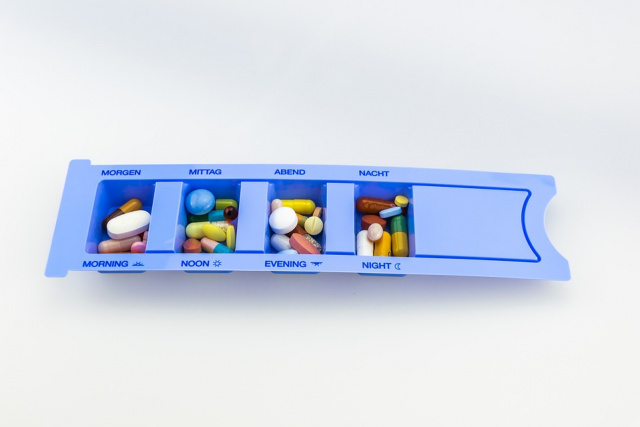OHIO
Issue 2 is the costliest ballot in state history, with over $70 million dollars spend during the last report from each respective campaign.
The issue is set to change the way that prescription drugs are bought and sold in the state, but do you know enough to make an informed decision?
The Issue Two:
A “yes” vote supports this measure to require state agencies and programs to purchase prescription drugs at prices no higher than what the U.S. Department of Veterans Affairs (VA) pays for them.
A “no” vote opposes this measure to require state agencies and programs to purchase prescription drugs at prices no higher than what the VA pays for them.
Ballot Language:
The official ballot title is as follows:
“
Issue 2
Proposed Law
Proposed by Initiative Petition
To enact Chapter 194 of the Ohio Revised Code
A majority yes vote is necessary for the law to pass.
To enact Chapter 194 of the Ohio Revised Code, which would:
Require the State of Ohio, including its state departments, agencies and entities, to not pay more for prescription drugs than the price paid by the United States Department of Veterans Affairs.
Establish that the individual petitioners responsible for proposing the law have a direct and personal stake in defending the law; require the State to pay petitioners’ reasonable attorney fees and other expenses; require the petitioners to pay $10,000 to the State if the law is held by a court to be unenforceable and limit petitioners’ personal liability to that amount; and require the Attorney General to defend the law if challenged in court.”
Arguments FOR:
Supporters of the bill include Democratic Primary contender and Vermont Senator Bernie Sanders, multiple Democrat state congressmen, senators, and city council members. The primary sponsor of the bill is the AIDS Healthcare Foundation, headed by Michael Weinstein.
Ohio Taxpayers for Lower Drug Prices provided arguments for the YES vote as follows:
“The drug industry is one of the nation’s biggest and most powerful political money machines. In 2016 the industry made $27.5 million in campaign contributions to Senate and House candidates.
In 2016, three dozen drug companies chipped in more than $110 million to the campaign to defeat Proposition 61, the California version of the drug relief act. Despite being outspent by more than 5 to 1, Prop. 61 lost by only a narrow margin. Expect the drug industry to spend big in the fight against the Ohio drug price measure. These guys will stop at nothing to protect their ability to gouge Ohio taxpayers and patients.
In the California Prop. 61 campaign drug company executives hid behind their richly-funded campaign TV ads and refused to take up a challenge to publicly debate pro-Prop. 61 leaders. The drug industry can be expected to run its Ohio campaign like its California campaign: no news conferences, no transparency, just lots and lots of slick – and misleading – ads. The drug companies don’t have right on their side but they do have the money.”
Arguments AGAINST:
A broad coalition has formed to push people against the vote, with approximately 75 associations and non-profits joining forces, ranging from Ohio Children’s Hospital Association, to multiple Chambers of Commerce, as well as veterans associations and more.
Ohioans Against the Deceptive Rx Ballot Issue also criticized the initiative’s sponsor, the AIDS Healthcare Foundation, stating:
“Issue 2 is being promoted by a billion-dollar California-based non-profit, the AIDS Healthcare Foundation (AHF), that gets nearly 80% of its revenue from selling prescription drugs. AHF’s controversial leader Michael Weinstein has been accused of using millions of tax-exempt dollars generated by his organization for political purposes unrelated to the mission of his foundation.”
Ballotpedia has fact-checked this accusation against the “YES” vote and rated it as a true an accurate statement concerning the financiers of the YES vote. However, it can be argued that a large amount of “NO” funding is also by corporate donors, centering around Pharmaceutical Research and Manufacturers of America (PhRMA) and Ohioans Against the Deceptive Rx Ballot Issue LLC (a wholly-owned subsidiary of PhRMA) provided 100 percent of the campaign’s funds.
Additionally, they were quoted as stating:
HIGHER DRUG COSTS. REDUCED ACCESS TO MEDICINES.
Experienced experts agree: the ballot proposal won’t lower health care costs for Ohioans or save money for taxpayers. In fact, it could lead to increased costs for the majority of Ohioans, including seniors and veterans, while reducing patients’ access to needed medicines.
MORE LAWSUITS. WASTED TAX DOLLARS.
Experts say the measure would be nearly impossible to implement and will lead to more red tape and government bureaucracy. What’s more, the ballot issue’s sponsors cunningly slipped in an unprecedented provision giving them a blank check to intervene — at taxpayer expense — in any legal challenges that may be filed.
Ballotpedia has fact-checked this accusation against the “YES” vote and rated it as a true an accurate statement concerning the financiers of the YES vote. However, it can be argued that a large amount of “NO” funding is also by corporate donors, centering around Pharmaceutical Research and Manufacturers of America (PhRMA) and Ohioans Against the Deceptive Rx Ballot Issue LLC (a wholly-owned subsidiary of PhRMA) provided 100 percent of the campaign’s funds.
Conclusion:
This is the most contentious vote concerning state issues in regards to funding and rhetoric among both sides. Broad coalitions have formed surrounding the issue, with the AGAINST vote having a considerably larger coalition, as well as funding. Similar initiatives to this measure failed in other states recently, such as California, where over $100 million dollars were spent on similarly-designed bills.










